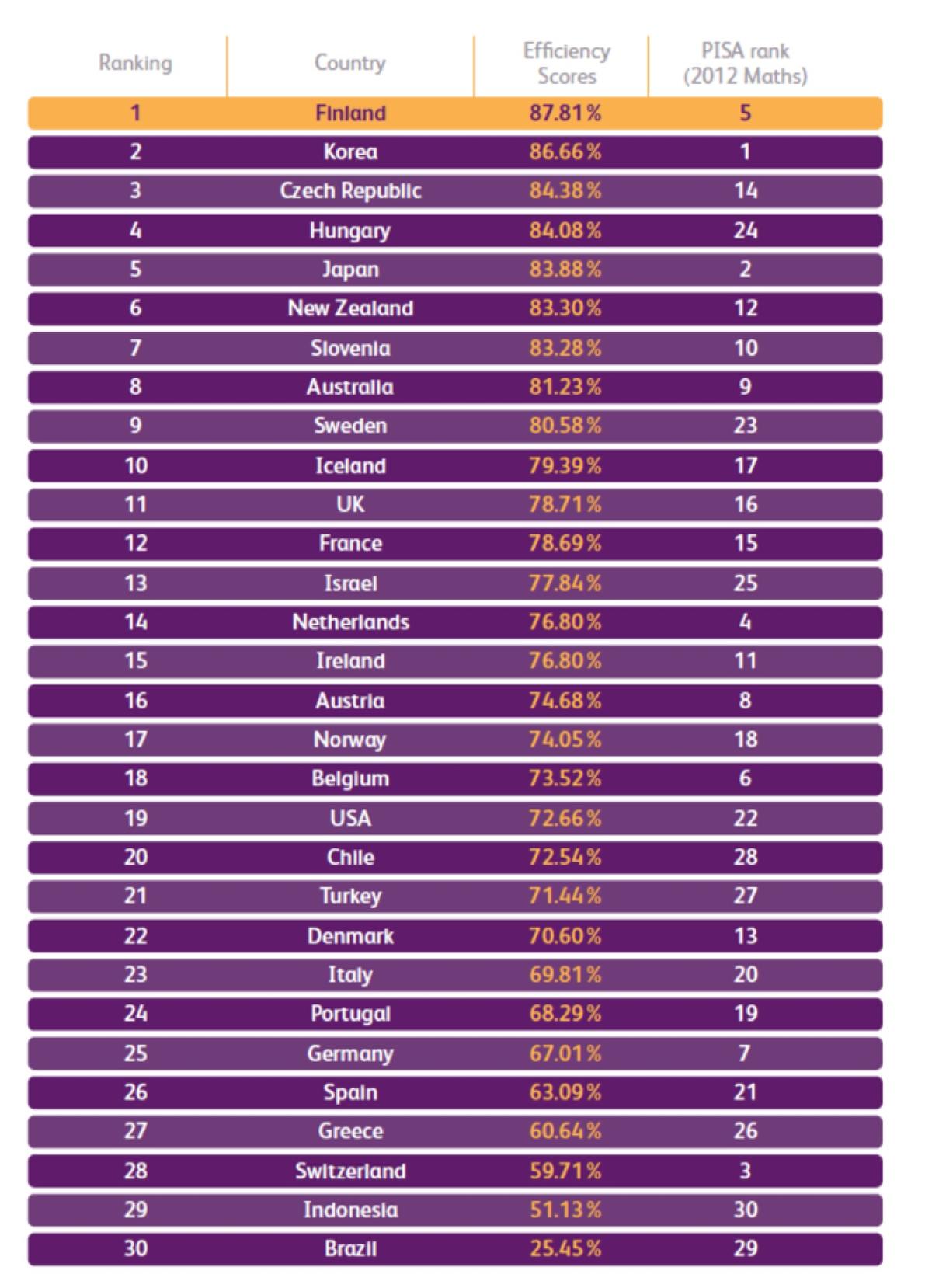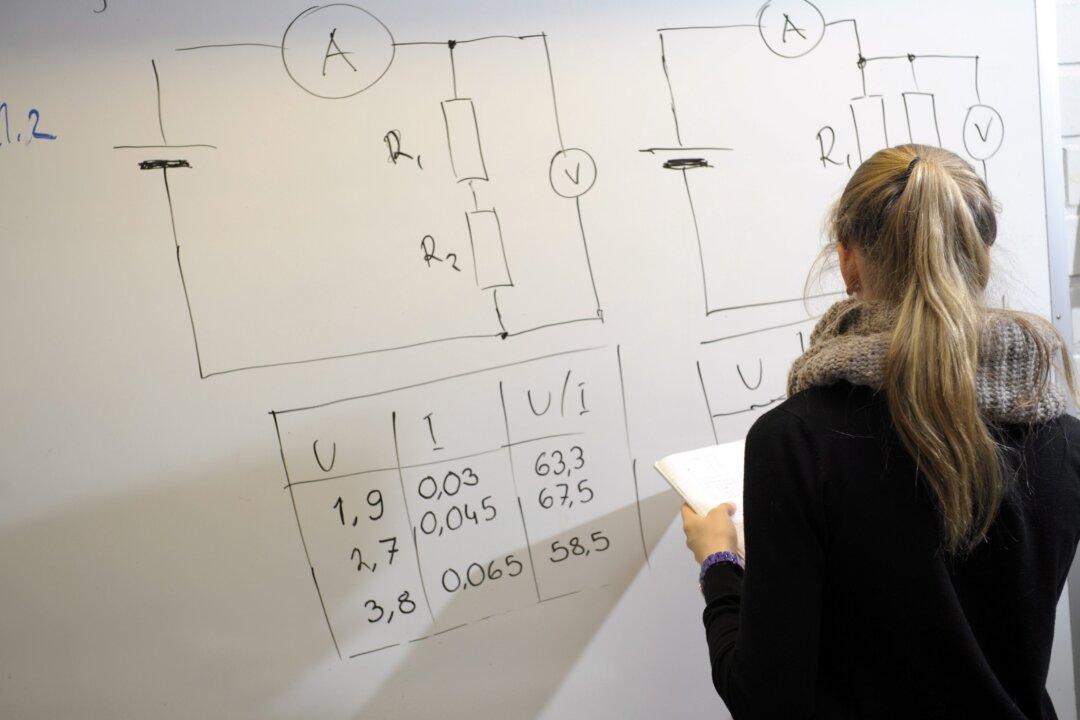There are around 1.3 billion children enrolled in primary and secondary schools worldwide. Each year, governments spend trillions of dollars on their education systems with the objective of educating children to the highest possible standard.
Some governments use available budgets more efficiently than others. A new report that I co-authored called the “Efficiency Index,” published by London-based education consultancy GEMS Education Solutions, has highlighted which countries are using these most effectively to produce the best educational outcomes for their young people. Finland, Korea, and the Czech Republic come out on top of the 30-country list.
“The Efficiency Index” is particularly relevant in the context of economic recession. In most countries, public expenditure on school education represents a significant share of total government budget.
The global proportion of government spending on education has, on average, risen for the past 20 years despite competition with other public sectors such as health, transportation, and defense. Yet there are potentially large financial savings to be made if we can better understand the underlying relationship between resource inputs and pupil performance.

Efficiency scores (%), by country, in “The Efficiency Index” by GEMS Education Solutions. (Courtesy Peter Dolton)
Best Scores Per Buck
Using econometric methods, our report examined data from 30 Organization for Economic Co-operation and Development (OECD) countries to ascertain which inputs funded by governments really do make a difference. It also looked at which countries are combining these inputs most effectively to produce the best educational outcomes for each dollar invested. The results are based on internationally comparable data collected over the last 15 years, using standardized scores from the OECD’s Program for International Student Assessment (PISA).
We also have other excellent data from the OECD that helps us compare each country’s educational system and we tested what impact each input had on children’s PISA scores. Only two inputs consistently proved to be statistically significant: teacher wages and pupil to teacher ratio.
The message was that education system inefficiency can be a result of both underpaying and overpaying teachers or having too big or too small class sizes.
The two most efficient systems, Finland and Korea, have the third and fifth largest pupil to teacher ratios, which means larger class sizes. Inefficiency can also come as a result of either overpaying teachers—in countries such as Germany and Switzerland—or underpaying teachers—in Indonesia and Brazil. These countries occupy four of the bottom six spots in the overall efficiency rankings.
But our findings suggest that on average, across all countries, the more money there is available to spend on teachers, the better results will be: perhaps not a surprising result as, on average, a country with more highly paid teachers draws their recruits from more-educated graduates.
More With Less
We took the analysis one step further and examined the “optimal” combination of these two inputs within the available funding envelope: rather than require extra resources, could more be achieved with the same (or less)?
Education efficiency is not immediately concerned with just raising PISA scores—but rather, as we live in a world of finite resources, it addresses the issue of achieving the best educational attainment with a limited budget. With unlimited funding available, much more could be done to increase education outcomes. But this is unrealistic: government budgets are limited, and spending needs to be prioritized accordingly in order to deliver value for money.
The Efficiency Index we present is therefore a relative measure. Finland has been calculated to be operating at the notional maximum, but even that system could achieve more with less. For example, each education system needs to decide how much funding to invest in teaching materials, infrastructure, reducing class sizes, or more highly paid teachers.
Our calculations find that Finland strikes the most efficient balance between teacher salaries and class sizes in order to produce educational outcomes. Using this as our benchmark for “maximum” efficiency we are able to calculate how PISA scores can be theoretically raised to Finland’s level by adjusting these two inputs—both of which are within the power of governments.
Setting Priorities
The report acknowledges that efficiency may not be the most important factor for some countries. Some countries will choose to pursue policies in which improving educational quality, rather than education system efficiency, is their most important goal.
This is an informed choice: But are the countries that are paying a premium for their education aware of it? If so, the additional benefits should be clearly defined for the taxpayer. If not, improving system efficiency should be of great interest.
Regardless of context, the index sheds light on the effectiveness of the spending choices made by those designing education policy. As governments seek to improve their education systems within financial constraints, we hope to inform debate about which items of educational expenditure are likely to make the greatest impact on the attainment of children.
Peter Dolton is a professor of economics at University of Sussex in the U.K. He is one of the co-authors of “The Efficiency Index” and received funding from GEMS Education Solutions. He is also a senior research fellow at the Centre for Economic Performance, London School of Economics and an IZA fellow. This article previously published at TheConversation.com.
